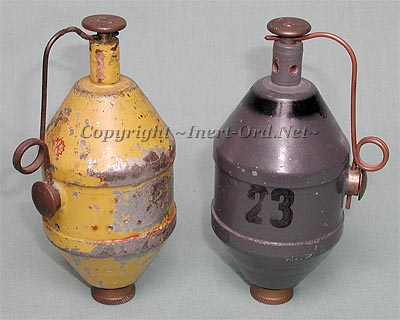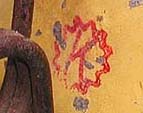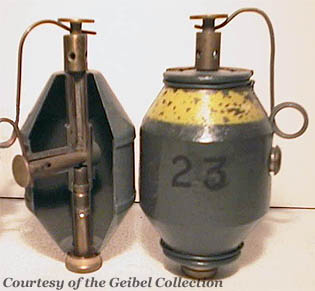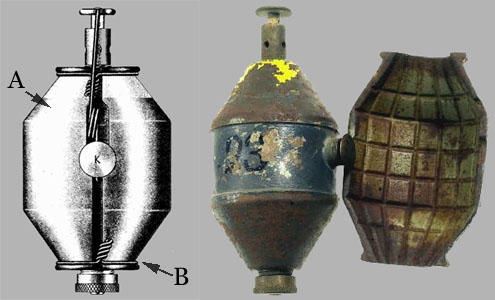
Background & History
The Danish M.1923 grenade is one of the more "mysterious" types encountered by collectors (at least in the U.S. anyway). It seems everyone has a different opinion about what it is exactly. I've seen it described as Swedish, Japanese and almost everything in between.
This grenade was developed by the Danish and produced in Denmark, designated the Haandbombe Model 1923.
After the German occupation in April of 1940, ordnance plants continued production using the German nomenclature: “Handgranate 342d" (Offensive) and Handgranate 343d" (Defensive).The Dansih continued producing the grenade well after the end of the war.
Two color schemes are found: Yellow; and Grey with a Black Band.
Yellow versions are less common than the Grey/Black style. Dated Yellow examples observed are from 1940 to 1945. It is not clear why these dual color patterns exisit for the practice grenade.
The Danish used yellow to denote their practice grenades (1916 to 1923). With the Germans in control of production from 1940-45, one might think they would have specified red paint, since that was their standard color for practice grenades. The Grey/Black pattern may or may not have been used at the same time as the Yellow.
Historical info on this is not clear.
The M.1923 practice grenade was still in production as late as 1956, using the Grey/Black color pattern.

Markings vary from: "23"; "K" inside a 12 pointed star; "AK/B 194x" (194x being the date); and "AMA" (AmMunitions Arsenalet).
 Construction & Function
Construction & Function